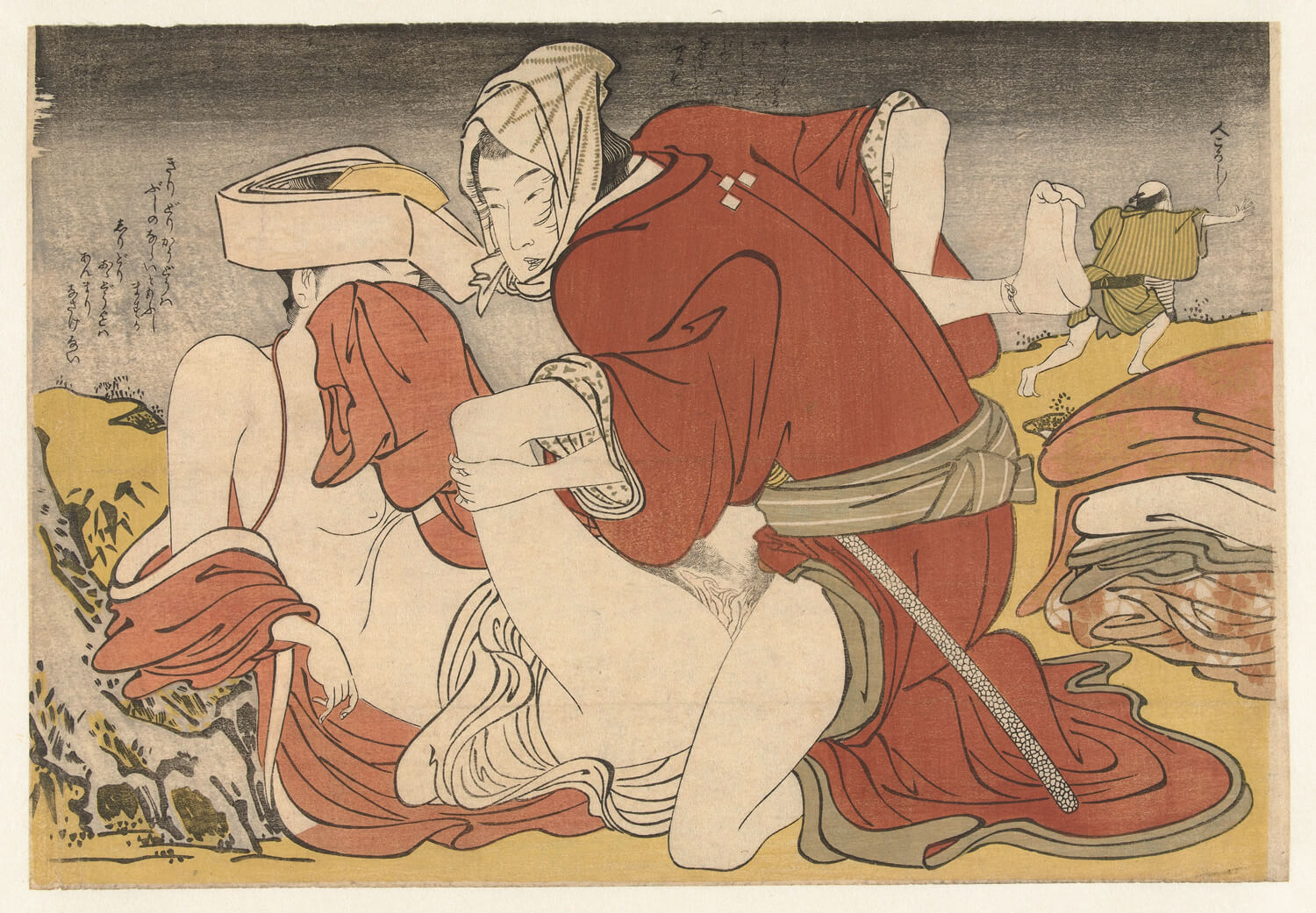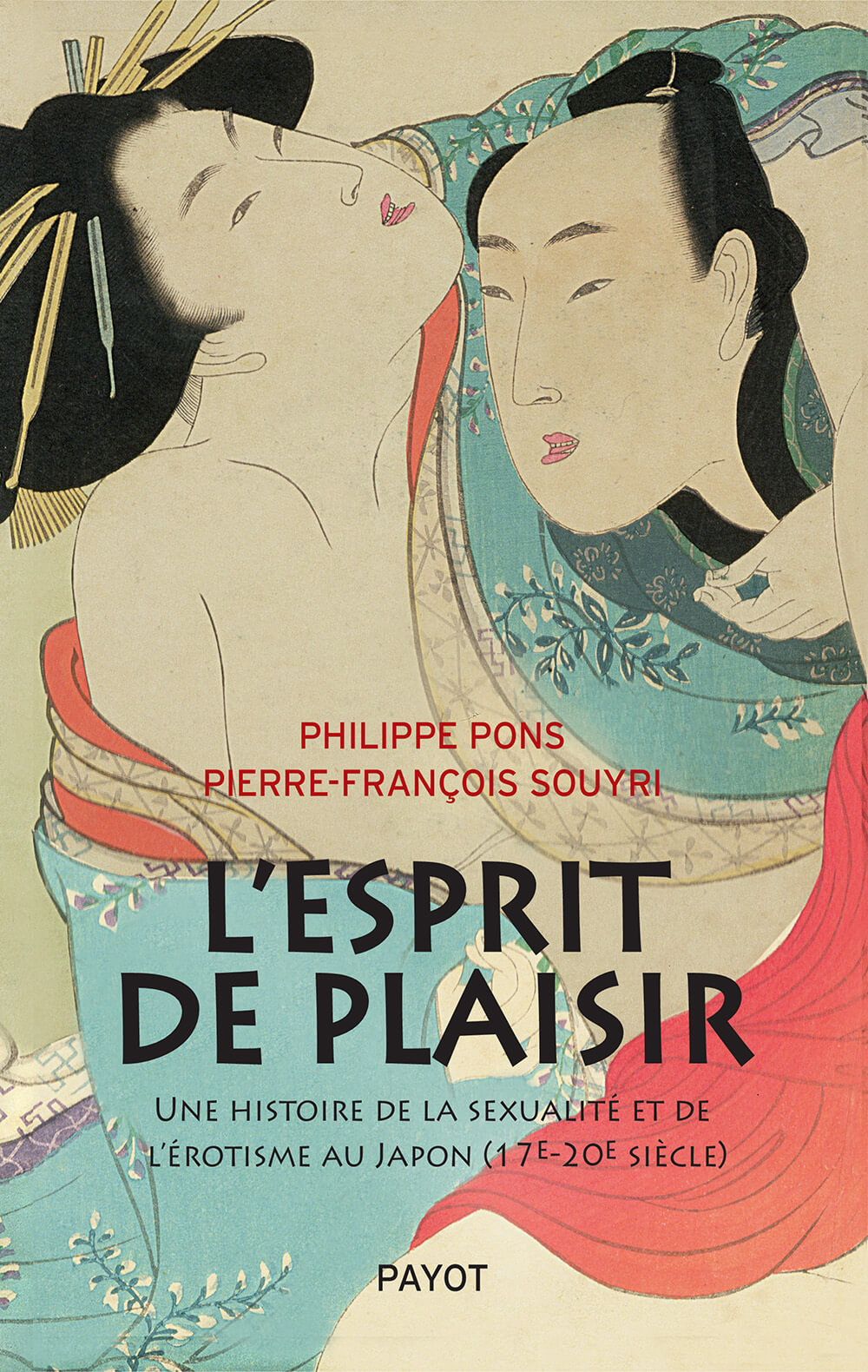‘The Spirit of Pleasure’, a Glimpse into Eroticism in Japan
From the cult of the samurai to that of geisha and the tightening of conventions, this essay traces the history of hedonism in Japan.

© Rijksmuseum
Supported by a multitude of textual and pictorial references, L’esprit de plaisir — Une histoire de la sexualité et de l’érotisme au Japon (‘The Spirit of Pleasure — A History of Sexuality and Eroticism in Japan’) deciphers the evolution of the perception of the body and desire over the centuries in Japan. The book, the joint work of Philippe Pons, Tokyo correspondent for Le Monde, and Pierre-François Souyri, honorary professor at the University of Geneva and specialist in Japanese history, takes care to avoid examining Japanese customs and behaviour through a westernising lens.
The book begins in the 17th century, when the virile figure of the samurai was the object of both female and male desire. This sanctified warrior’s body gradually lost its lustre as Japanese society’s relationship with writing became stronger. The late 18th century marked the decline in fondness for prominent muscles coupled with unbridled machismo, and gave way to an attraction towards educated men with a more subtle sensuality.
The authors also address nudity, which is not in itself considered erotic in Japan. Because of baths, which are shared by men, women, and children, the naked body is not linked to sexual imagery. This is demonstrated by the low representation of fully naked bodies in erotic shunga engravings. Beneath the fabric, in what is hidden from sight, is where Japanese eroticism lies. This eroticism is far from being taboo, and the book explains that erotic and pornographic engravings were looked at as a family, with an educational aim.
A tightening up of attitudes in the Meiji era
The Meiji era (1868-1912) saw a tightening of this relaxed attitude as Japan opened up to the world. The modernisation of the country also involved the body being controlled. With the arrival of people from the West, codes were shaken up and a Puritan model in the same vein as the Victorian movement emerged, repressing nudity, homosexuality, and pleasure. Thus, the West shaped the new erotic imagination in Japan, before society relaxed in the 1920s with the emergence of modern girls and the return of a relative sexual freedom.
The book comes to a close in the late 1950s, coinciding with the closure of pleasure quarters in Japan where courtesans reigned, reshuffling the cards of paid-for sex. L’esprit de plaisir — Une histoire de la sexualité et de l’érotisme au Japon sheds light not only on the evolution of Japanese society, but also on the impact the West had on the perception and exercising of eroticism in Japan.
L’esprit de plaisir — Une histoire de la sexualité et de l’érotisme au Japon (2020) (‘The Spirit of Pleasure — A History of Sexuality and Eroticism in Japan’), by Philippe Pons and Pierre-François Souyri, is published by Payot Rivages (currently unavailable in English).

© Payot Rivages
TRENDING
-
The Tattoos that Marked the Criminals of the Edo Period
Traditional tattoos were strong signifiers; murderers had head tattoos, while theft might result in an arm tattoo.

-
Paris, Tokyo: Robert Compagnon
With his co-chef and talented wife, Jessica Yang, Robert Compagnon opened one of the top new restaurants in Paris: Le Rigmarole.
 3:31
3:31 -
Chiharu Shiota, Red Threads of the Soul
Last year, more than 660,000 people visited the retrospective 'Chiharu Shiota: The Soul Trembles' exhibit at the Mori Art Museum.

-
‘Before Doubting Others, Doubt Yourself. Who Can Truly Say a Dish Isn’t What It Used to Be?’
In ‘A Non-Conformist’s Guide to Surviving Society’, author Satoshi Ogawa shares his strategies for navigating everyday life.

-
The Story of Sada Yacco, the Geisha who Bewitched Europe
Described by Dazed magazine as the first beauty influencer, she has been restored to her former glory since 2019.





